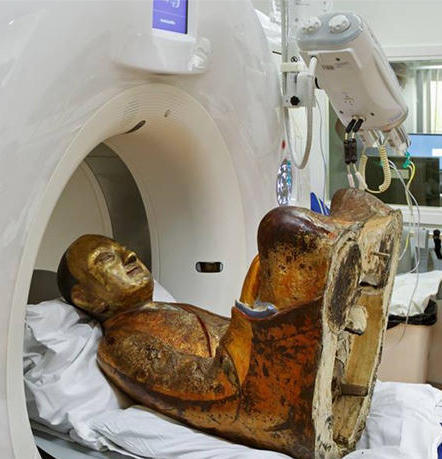
Mummified monk from year 1100 found hiding inside ancient Buddha statue
Dutch scientists have found the ancient hidden mummified remains of Buddhist master Liuquan of the Chinese Meditation School in a statue of a sitting Buddha. An endoscopy revealed that in the abdominal cavity where there had once been organs, there was instead an unidentified material and scraps of paper printed with ancient Chinese characters.
He looked right into the bottom of this monk. You can see part of the bones and tissue of his skin.
Vincent van Vilsteren, an archaeology curator at the Drents Museum (LiveScience)
The Drents Museum says it suspects this mummy could be a case of self-mummification. That was a practice by Buddhist monks in Asia that involved a strict diet, including poison, to the point of near starvation in order to promote preservation of the body. When they were near death, they were buried alive. The mummy is now on display at the National Museum of Natural History in Budapest as part of the Mummy World exhibition. The exhibition will head next to Luxemburg in May 2015, the Drents Museum says.
The discovery of the mummy is of great cultural significance, not only because it is the only one of its kind, but so far the only Chinese Buddhist mummy that is available in the West for scientific research.
Meander Medical Center

Science Mummified monk